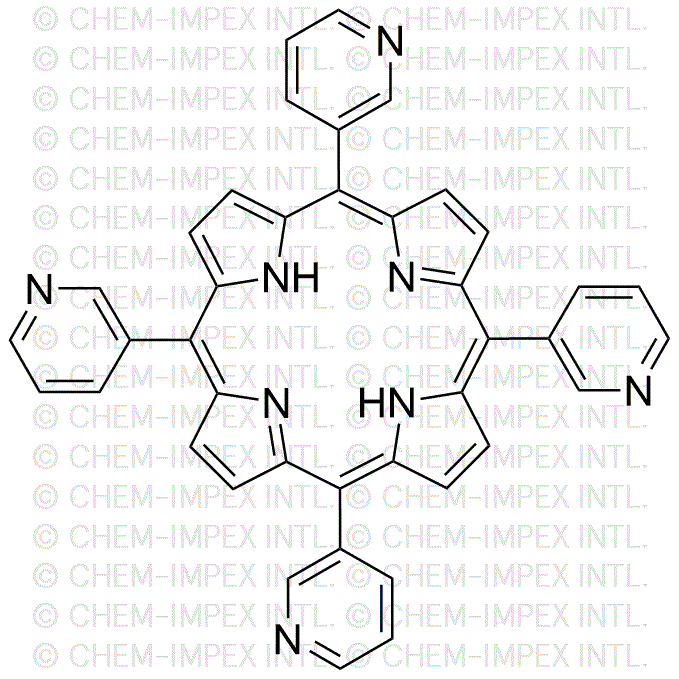5,10,15,20-(Tetra-3-pyridyl)porphyrin is widely utilized in research focused on:
- Photodynamic Therapy: This compound is effective in cancer treatment as a photosensitizer, helping to target and destroy cancer cells when exposed to light.
- Catalysis: It serves as a catalyst in various chemical reactions, particularly in organic synthesis, enhancing reaction rates and selectivity.
- Solar Energy Conversion: The compound is applied in dye-sensitized solar cells, improving the efficiency of light absorption and energy conversion.
- Sensors: It is used in the development of chemical sensors for detecting environmental pollutants, offering high sensitivity and specificity.
- Biomedical Imaging: This porphyrin derivative is utilized in imaging techniques, providing contrast in medical imaging and aiding in the diagnosis of diseases.
General Information
Properties
Safety and Regulations
Applications
5,10,15,20-(Tetra-3-pyridyl)porphyrin is widely utilized in research focused on:
- Photodynamic Therapy: This compound is effective in cancer treatment as a photosensitizer, helping to target and destroy cancer cells when exposed to light.
- Catalysis: It serves as a catalyst in various chemical reactions, particularly in organic synthesis, enhancing reaction rates and selectivity.
- Solar Energy Conversion: The compound is applied in dye-sensitized solar cells, improving the efficiency of light absorption and energy conversion.
- Sensors: It is used in the development of chemical sensors for detecting environmental pollutants, offering high sensitivity and specificity.
- Biomedical Imaging: This porphyrin derivative is utilized in imaging techniques, providing contrast in medical imaging and aiding in the diagnosis of diseases.
Documents
Safety Data Sheets (SDS)
The SDS provides comprehensive safety information on handling, storage, and disposal of the product.
Product Specification (PS)
The PS provides a comprehensive breakdown of the product’s properties, including chemical composition, physical state, purity, and storage requirements. It also details acceptable quality ranges and the product's intended applications.
Certificates of Analysis (COA)
Search for Certificates of Analysis (COA) by entering the products Lot Number. Lot and Batch Numbers can be found on a product’s label following the words ‘Lot’ or ‘Batch’.
Numéro de catalogue
Numéro de lot/série
Certificates Of Origin (COO)
This COO confirms the country where the product was manufactured, and also details the materials and components used in it and whether it is derived from natural, synthetic, or other specific sources. This certificate may be required for customs, trade, and regulatory compliance.
Numéro de catalogue
Numéro de lot/série
Safety Data Sheets (SDS)
The SDS provides comprehensive safety information on handling, storage, and disposal of the product.
DownloadProduct Specification (PS)
The PS provides a comprehensive breakdown of the product’s properties, including chemical composition, physical state, purity, and storage requirements. It also details acceptable quality ranges and the product's intended applications.
DownloadCertificates of Analysis (COA)
Search for Certificates of Analysis (COA) by entering the products Lot Number. Lot and Batch Numbers can be found on a product’s label following the words ‘Lot’ or ‘Batch’.
Numéro de catalogue
Numéro de lot/série
Certificates Of Origin (COO)
This COO confirms the country where the product was manufactured, and also details the materials and components used in it and whether it is derived from natural, synthetic, or other specific sources. This certificate may be required for customs, trade, and regulatory compliance.


